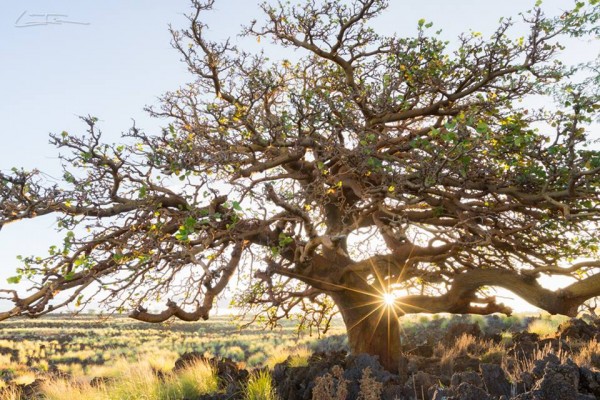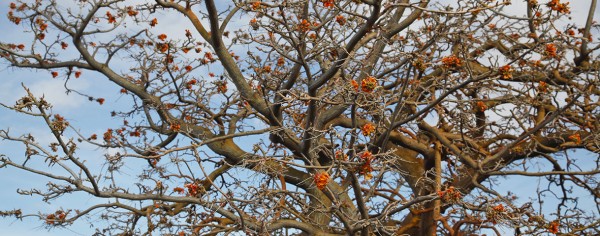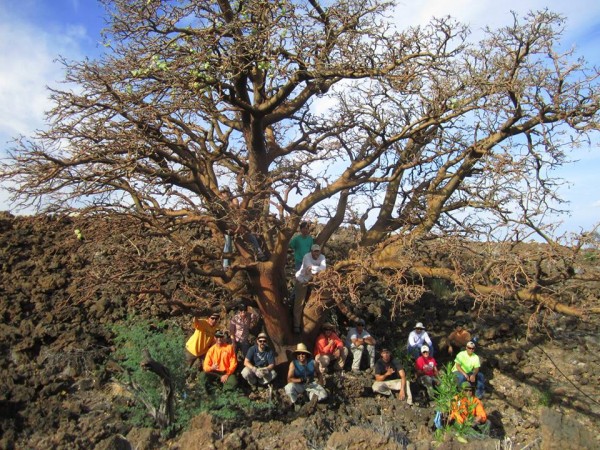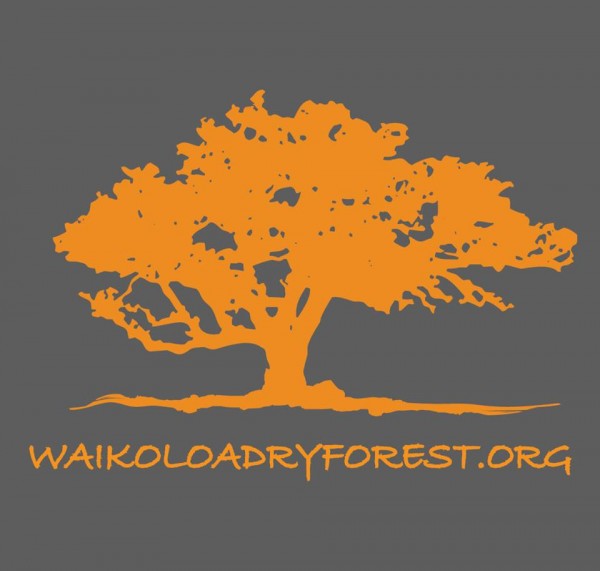Free Guided Tour August 29th with the Waikoloa Dry Land Forest Initiative
When driving the barren landscape that surrounds the South Kohala and North Kona region, it’s hard to believe that there is anything special about the dry, vast terrain. Hawaiian tropical dry land forests are on the leeward sides of all the Hawaiian Islands. Receiving less than 50 inches of rain per year, only 5% of the native dry land forests remain intact.

Magnificent Wiliwili Tree | Photograph Provided by Ian Lindsey Photography
One of the notable species that call this habitat home is the famed Wiliwili Tree, otherwise known as Erythrina sandwicensis. Many of us associate the Wiliwili Tree with the Hualalai Four Seasons Resort at Kaupulehu. Upon entering Hualalai Resort, the landmark tree graces the Hualalai’s memorable rock wall entry sign. According to Wikipedia, Wiliwili means “repeatedly twisted” in the Hawaiian language and refers to the seedpods, which dehisce, or twist open, to reveal the seeds. What many of us don’t realize is that the Wiliwili is an endangered species endemic to Hawaii.

Twisted Wiliwili Branches in Bloom | Photo Provided by Waikoloa Dry Land Forest Initiative
Due to the rapid decline of the Big Island’s dry land forest, the Waikoloa Dry Land Forest Initiative was created to help preserve the last remaining forests. The organization has taken on the responsibility of caring for what remains of the forest, and promote the recovery of these unique and valuable forests.

Dedicated Volunteers | Photo Provided by Waikoloa Dry Land Forest Initiative
According to their website, The Waikoloa Dry Forest Preserve is located just southwest of Waikoloa Village and encompasses 275 acres of remnant dry land forest. The preserve is home to several endemic plant species including the Wiliwili (Erythrina sandwicensis) and the critically endangered uhiuhi (Mezoneuron kavaiensis). The preserve protects nearly half of the remaining kūpuna (ancestral) Wiliwili of the Waikoloa region and promotes the natural regeneration of the forest, and is also the site of large-scale reforestation efforts.

On August 29th, the organization invites the community to join their staff on an interpretive walking tour of the preserve next week. They provide visitors with the opportunity to get up close to some of the ancient Wiliwili Trees preparing to bloom. The tour will include a tour of the restoration areas and native plants in our nursery with ample opportunities for photos!
Additional Information
For more information, or to register, please visit their website: waikoloadryforest.org.


Leave your opinion here. Please be nice. Your Email address will be kept private, this form is secure and we never spam you.